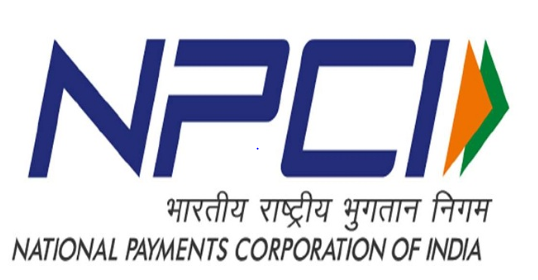August 2020
A global pandemic and fast-changing regulation are factors accelerating the digitalisation of treasury ecosystems across Asia, as a recent webinar from The Economist Group and EuroFinance confirmed. flow’s Graham Buck reports on the main discussion points
An event on the scale of a global pandemic acts as a catalyst both for sudden change and accelerating the pace of changes that were already underway.
In the case of the digitalisation of treasury ecosystems across the Asia Pacific region, Covid-19 has given additional tailwind to transformations that were already apparent in the past few years, ranging from the launch of instant payments to the introduction of digital signatures.
The webinar ‘Integrating regulation and technology to support treasury digitisation in APAC’, hosted by EuroFinance and The Economist Group on 28 July and supported by Deutsche Bank, acknowledged that cross-border operations don’t always transition easily to digitalisation. The use of digital signatures is not yet accepted in all countries, the opening and closing bank accounts can still be paper and labour-intensive.
Physical cash has yet to be displaced in remote areas although introduction of new payment systems and e-wallets will facilitate digitalisation moving forward. One of the few positive results of the pandemic is that lockdowns have required many of these opportunities to be accelerated.
Digital signatures gain traction

Principal of Treasury Matters
The webinar was opened by Damian Glendinning, Principal of the advisory firm Treasury Matters, who promised that the discussion would focus less on specific treasury technology than on the environment and ecosystem needed to move towards the full digitalisation of treasury, and the potential obstacles along the way. His trio of panellist were Praveena Rai, Chief Operating Officer of the National Payments Corporation of India (NPCI); Arno Gruner, Head of Finance SSC, Treasury & Tax, Asia, at AMS and Chintan Shah, Managing Director, Head of Cash Management – APAC, Deutsche Bank.
Glendinning added that many of the questions submitted ahead of the session focused on digital signatures, which have come into their own in the past six months as the pandemic has made traditional ‘wet signatures’ impractical.

Head of Finance SSC, Treasury & Tax, Asia, AMS
AMS, a designer and producer of sensor solutions and other software, is an Austrian company with offices across Asia. Gruner, who is based in Singapore, said that AMS had “done its homework” and began digitalisation of the treasury function – particularly accounts payable and accounts receivable – several years ago and had linked it up to Deutsche Bank’s system.

AMS opened its Singapore office in 2017
The digital signature function had proved particularly useful and powerful in Asia, such as when opening new bank accounts and undergoing the know-your-customer (KYC) process, as this could be centralised. Digital signatures had assisted internal process controls and documentation.
Gruner agreed that digital signatures have gained more acceptance in some countries than others. This had created problems and delays in countries such as the Philippines, where AMS had a number of suppliers who required prompt payment. Banks in the region were not that communicative and vendors continued to require cheque payments when goods were delivered. Local statutory requirements also meant that paper invoices were the only basis on which tax payments could be made.
This unsatisfactory situation had suddenly changed in the past couple of years as local banks had a last begun communicating and decided to cooperate in developing a clearing platform. The result was the PESONet interbank funds transfer service under the National Retail Payment System (NRPS) of the Bangko Sentral ng Pilipinas (BSP) for the electronic transfer of funds.1 This enables AMS to make the appropriate tax deduction on receipt of a supplier invoice and pay promptly.
Challenge offset by opportunity

Chief Operating Officer of the National Payments Corporation of India (NPCI)

Rai, who was a banker earlier her career before joining India’s NPCI,2 said that although Covid-19 created challenges for everyone, the fact that everyone across the financial services ecosystem was focused on problem solving also unlocked opportunities.
India had been making good progress in the past five years with digitising its tax system and while several challenges remained, each of them is being systematically addressed as “everyone is more open to new suggestions and innovation, including the regulators”. The digitisation of documentation is another area where steady progress is being achieved. A combination of trusted mechanisms that are also user-friendly is now being developed to encourage the uptake of digital signatures.
Glendinning commented that the convenience of digital signatures showed up the weaknesses of traditional wet signatures, although so far they have achieved much faster adoption in the consumer space than in the business space.
Rai added that the Unified Payments Interface (UPI) the instant real-time payment system launched by NPCI in 2016 had helped the progress of digital payments in India and had been further helped by account aggregation. Data information can, when consent is given, be provided to third parties although there are tight controls in place.
However, when India went into lockdown earlier this year many small merchants didn’t use digital payments as their suppliers wanted to be paid in cash and few took advantage of the country’s clearing house infrastructure, which has introduced e-signature mechanisms.
Glendinning added that the Indian government’s motives in trying to wean off consumers and businesses from their traditional dependency on cash were not entirely altruistic, but it was nonetheless moving in the right direction.
The bank as a conduit
"A conduit between regulators and tech developers"
Deutsche Bank’s Chintan Shah described the bank’s role as “a conduit between regulators and tech developers”. Its engagement with corporate clients had been changing over the past couple of years. Thanks to treasury automation, discussions now focused on the best ways of leveraging tech developments, while the growth of instant payments and electronic payments were accelerating the decline of cash. Corporate clients recognised the benefits of instant and 24/7 payments, which open up new cases for moving from business-to-business (B2B) to business-to-consumer (B2C) and more transactions online.
He offered the example of an Indonesian company, which early on in the pandemic was struggling to collect cash until the bank implemented a solution allowing a move from physical cash to collecting money via e-wallets. Shah added that the transition would have happened over time without Covid-19, but the pandemic had served to accelerate the adoption of e-wallets. The Bank had also seen clients shift from B2B to B2C and also look at ways of making B2C more efficient. Shah noted that paying tax and making statutory payments have traditionally been highly manual processes and the bank had developed platforms for making them more efficient.
Digitalisation had also been boosted by China’s introduction of the Shanghai ‘single window’ platform for international trade and the resulting digitalisation of trade documentation.3 What was traditionally a very document-heavy workflow had become much more efficient even before Covid-19 made its impact; not only in China but also in India. Strong technology can provide a solution for a host of different use cases.
Acceptance of risk
Glendinning was keen to hear more on the topic of companies moving from B2B to B2C, which he said potentially spelt the end of wholesalers and retailers and also impacted on exchange controls. He called the growing use of e-wallets “fascinating”, as it introduces more non-bank players into the financial system. Banks can either regard these newcomers as potential partners or as competitors.
Shah agreed that the trend was a business challenge for the banks, with new payment platforms becoming available as central banks create new avenues for corporates to explore. Asia in particular has a growing number of young people dependant on their mobiles and mobile-based payments systems have been developed in response, which had not yet reached the critical mass to become a disruptive force but was nonetheless steadily growing.
He added that despite the digitalisation of cross-border payments and the wish of government authorities to encourage further digitalisation, exchange control regulation still demands sight of all underlying documents and data. So there are further efficiencies still to be released for everyone in the value chain through improved control and risk management.
While more fintechs and service providers are issuing e-wallets, corporates want to see greater regulation of this space. Shah added that the transfer of money from an e-wallet creates a degree of underlying risk, but with appropriate flows under specific-use cases this risk is well mitigated.
Rai noted that the technology surrounding application programming interfaces (APIs) has played a major role in transforming business models, with information becoming of major importance due to the instantaneous nature of the payment.
This is particularly evident when purchasing travel tickets online, agreed Shah. Successful payment acknowledgement needs to be instantaneous in order for the ticket to be issued, even if the airline selling it actually receives the incoming payment a day or two later. The information that enables ticket buyers to book an order instantaneously is distinct from the payment information.
A central issue regarding the benefits of digitalisation is the availability of data and information, said Glendinning. As the banking system is unable to carry the sheer volume of information, it creates the need for channels outside of the bank.
This is where the fintechs potentially play an enabling role, suggested Rai, depending on which countries they operate in. They can perform a number of important roles, including assuming the compliance and control functions. There are good models for this in the retail space, with a collaborative framework such as the Unified Payment Interface (UPI) in India.
The ‘last mile’ interface is an open one, for which a bank or a fintech can be the provider and new models will develop beyond the retail space, forecast Rai.
In addition, fintechs may also have a ‘last mile’ customer-facing role, with great potential for them in the future as major players in a conducive environment.
Asked how AMS might be impacted, Gruner said the company was mainly a producer and more a provider of hi-tech than fintech. Regular communication with its suppliers and vendors was essential and required a mix of online and digital solutions for this, both internally and externally. The company also needed to have
sufficient funds for paying its suppliers and employees. Many previously menial processes for these tasks were abolished as coronavirus spread in order to make working from home easier, but the pandemic has also raised questions about taxation for cross-border payments.
The risk element
Summing up the main issues involved in digitalisation, Shah said that multiple use cases regularly come up in the area of cash management so the bank needs to understand what each client’s individual needs are. “So we’re very client and use-case specific in finding out what precisely these are,” he added.
Glendinning agreed that among the opportunities presented by digitalisation is the ability to personalise it. It was no longer a case of ‘one size fits all’ as banks could be highly selective with the data they picked out. But while it was evidently “the way to go”, what were the attendant main areas of risk?
Gruner said that for AMS it was the need to move carefully and follow the technology provided by the bank. “We can’t move ahead of technology, so we have to focus on what is going to be digitalised without interrupting our production flow.”
For Rai, there were three main issues. First is discussion; as the world becomes more digital everyone needs to be aware of the risk being taken on and how to manage it, particularly in the area of cybersecurity. Second is the potential for liability. “As we return nearer to normal, we’ll also see volumes and growth also return to pre-pandemic levels, but with a lot more digitalisation than before,” she predicted. “So the infrastructure needs to be in place that ensures the systems don’t go down.” The third element is the legal framework of each country and how it is addressed.
The main benefits of digitalisation and real time is the ability to carry out matching more easily than previously, commented Glendinning. Which means banks are particularly risk conscious.
Shah responded that from the corporate viewpoint, the ability to deal with a trusted partner is key, so that issues such as data leakage or access control rights do not arise. A complete digital risk strategy must be built around a robust framework that includes authorisations and cyber security resilience and controls. This should be capable of picking up any inconsistent data that’s out of sync with usual behaviour. “All this means that you must be connecting digitally with a trusted partner, while maintaining sufficient data analytics,” he emphasised.
So with the impact of the pandemic set to be lasting and irrevocable, working together is the way forward – but treasury must be careful when selecting who it is going to work with.
The EuroFinance/Economist Group webinar ‘Integrating regulation and technology to support treasury digitisation in APAC’,supported by Deutsche Bank, was presented on 28 July 2020.
Sources
1 See https://bit.ly/31PrKgG at dbp.ph
2 See https://bit.ly/3kzSfiV at npci.org.in
3 See https://bit.ly/2XYMhON at china-briefing.com
Go to Corporate Bank EXPLORE MORE
Find out more about products and services
Go to Corporate Bank Go to Corporate BankStay up-to-date with
Sign-up flow newsbites
Choose your preferred banking topics and we will send you updated emails based on your selection
Sign-up Sign-upSubscribe Subscribe to our magazine
flow magazine is published annually and can be read online and delivered to your door in print
You might be interested in
CASH MANAGEMENT
Digital treasury accelerates in Asia Digital treasury accelerates in Asia
Treasury digitisation across Asia was gaining traction even before Covid-19 struck, but the pandemic has accelerated the process. A recent Deutsche Bank webinar provided a progress report
Cash management, flow case studies, Technology {icon-book}
Tomorrow’s treasury: what’s the role of real-time? Tomorrow’s treasury: what’s the role of real-time?
The vision of a “real-time treasury” has been around for several years now. But how do instant payments and access to real-time information really change the way treasury is managed? flow’s Desirée Buchholz hosts a debate on the role of real-time in the future of treasury
MACRO AND MARKETS {icon-book}
On the bright side On the bright side
Caught in the slipstream, or powering ahead? Dr Rebecca Harding examines ASEAN’s trade momentum in the context of wider geopolitical disruption



